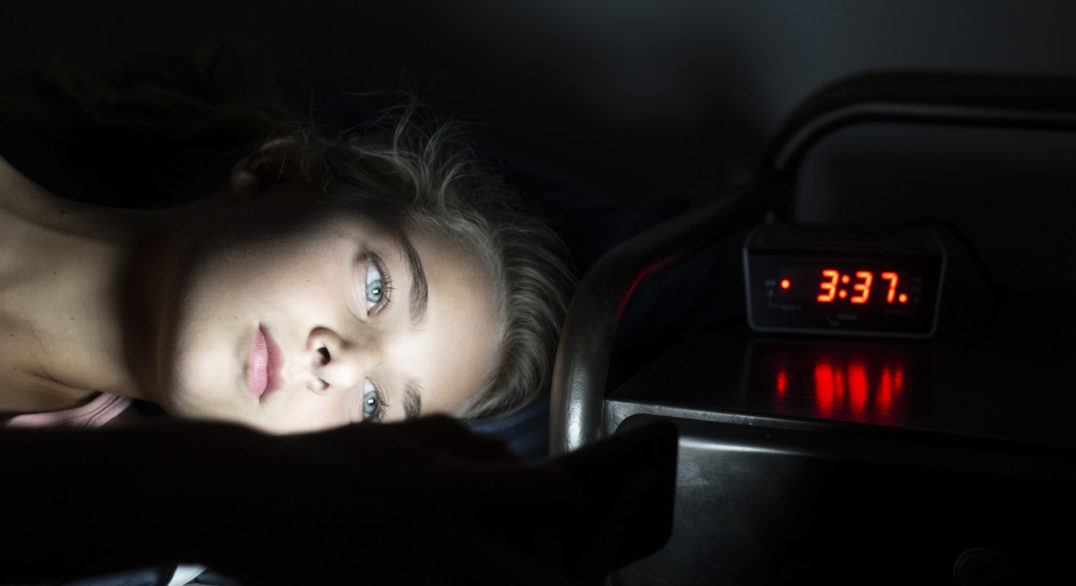by Willough Jenkins, MD
When our children’s typical lives are disrupted, it is important to return to basics to create structure and a sense of control. Even if younger children may not be directly aware of the details of the pandemic or the movement against racial injustice, these instances have influenced day-to-day routines for many, along with the behavior of adults around them. This type of change can lead to more acting out, irritability, anxiety and depression in children and youth. A key component of well-being is sleep, and by ensuring children get enough sleep, we as parents and caretakers can help them cope with stress. In addition, sleep creates a structure to the day, which is comforting and is a known variable amidst newer instability.
Even with many schools returning virtually this fall, maintaining a regular sleep schedule and avoiding sleeping in every day is a simple, effective way to help kids maintain good sleep hygiene. A reasonable time to expect classwork to begin would be after 8 a.m., unless your child is a natural early riser. Preschoolers (ages 3–5 years) generally need between 10 and 13 hours of sleep per night, school-age children (ages 6–13 years) need between nine and 12 hours, and teenagers need eight to 10 hours. The vast majority of school-age children do not get enough sleep on school nights.
You can help your child prioritize sleep with the following strategies:
- Create a calming bedtime routine. This doesn’t have to be complicated and is applicable for all ages. Having a relaxing, non-screen-related, wind-down activity before bed is also helpful. A warm bath or reading a book are nice options.
- Exercise during the day, but not too close to bedtime! Without most organized sports, summer camps and formal physical activities, our children may be getting dramatically less exercise than normal. Scheduling bike rides, going for walks or doing virtual fitness classes are all ways to incorporate fitness back into the day.
- Have a set bedtime and wake-up time every day. Without them, it can be easy to fall into the habit of later bedtimes and sleeping in. One exception is with older adolescents, who naturally tend to shift to a later bedtime. For this age group, and a wake-up time between 7 and8 a.m. is ideal.
- Watch the daily amount of screen time, and limit use close to bedtime. Screens and devices should be removed from children’s bedrooms.
- Monitor naptimes. For kids over age 5, naps should be less than 20 minutes, if taken at all.
- Avoid caffeinated products after 4 p.m.
- Talk about the things going on in the world. Your children might understand more than you realize and need your help and guidance in processing. Encourage them to express their emotions and allow them to talk, even if it seems like venting. The best advice for any conversation with a child is that they should be talking more than you! However, try to have discussions like these during the day, rather than leading up to bedtime.
- Practice relaxation techniques during the day. Breathing exercises and other mindfulness exercises are always useful life skills and help with relaxation for sleep.
A Special Note About Teenagers
The best way to come up with a plan that a teenager will buy into is to have them help develop it. Motivation to improve sleep is necessary for them to be cooperative in making a change. Talking about the importance of sleep on athletic and cognitive function and even skin health can help. Staying up late doing homework is usually much less efficient than rising early and completing work first thing in the day, and this can also serve as a good productivity tip. Also, some adolescents gravitate toward cave-like conditions, so make sure they are getting enough natural light exposure during the day.
When to Seek Additional Help
If your child takes more than 45 minutes to fall asleep, wakes frequently throughout the night, snores or gasps, or doesn’t seem rested after a full night’s sleep, it would be a good idea to check in with your child’s physician to ask about developing a sleep plan.
Dr. Jenkins is inpatient medical director of Child and Adolescent Psychiatry Services and clinical lead of the pediatric consultation liaison service at Rady Children’s Hospital-San Diego, and an assistant professor of psychiatry at University of California San Diego School of Medicine.
Sources
Paruthi S, Brooks LJ, D’Ambrosio C, et al. Consensus statement of the American Academy of Sleep Medicine on the recommended amount of sleep for healthy children: methodology and discussion. J Clin Sleep Med 2016;12:1549–61.
Wheaton AG, Everett Jones S, Cooper AC, Croft JB. Short sleep duration among middle school and high school students — United States, 2015. MMWR Morb Mortal Wkly Rep 2018;67:85-90.

Post a Comment
You must be logged in to post a comment.